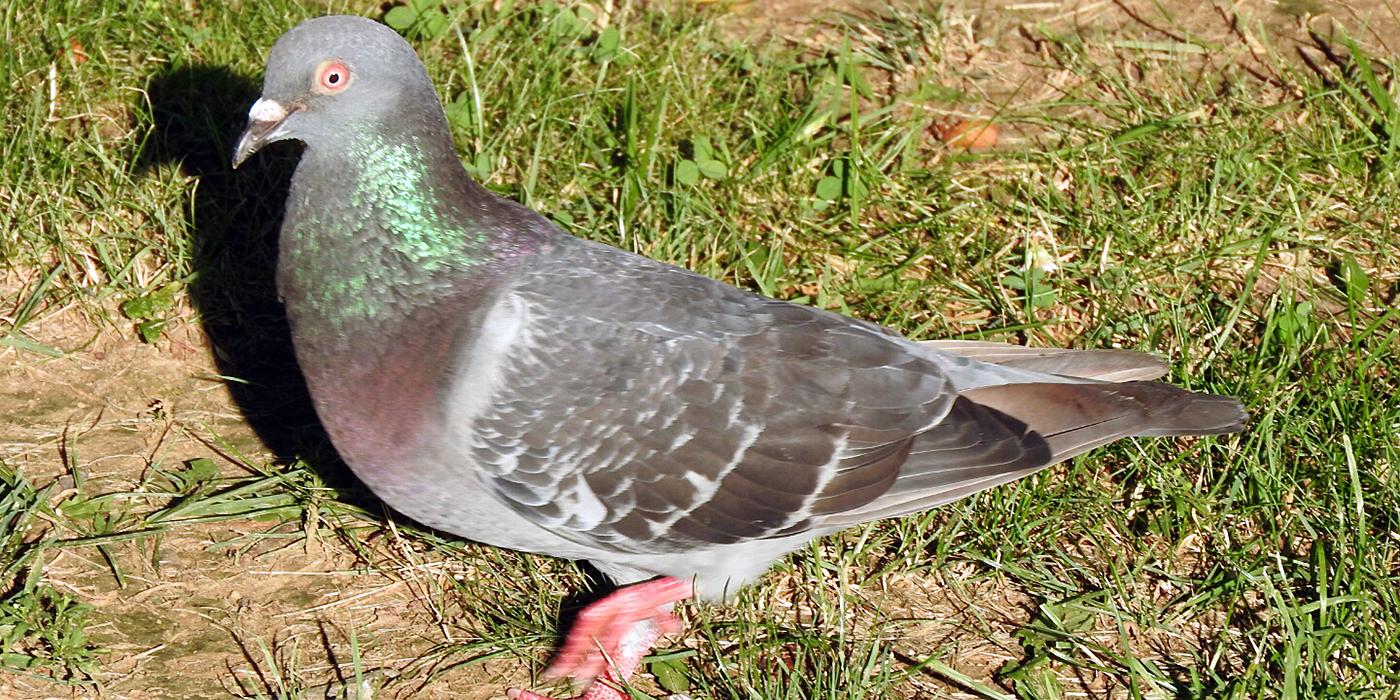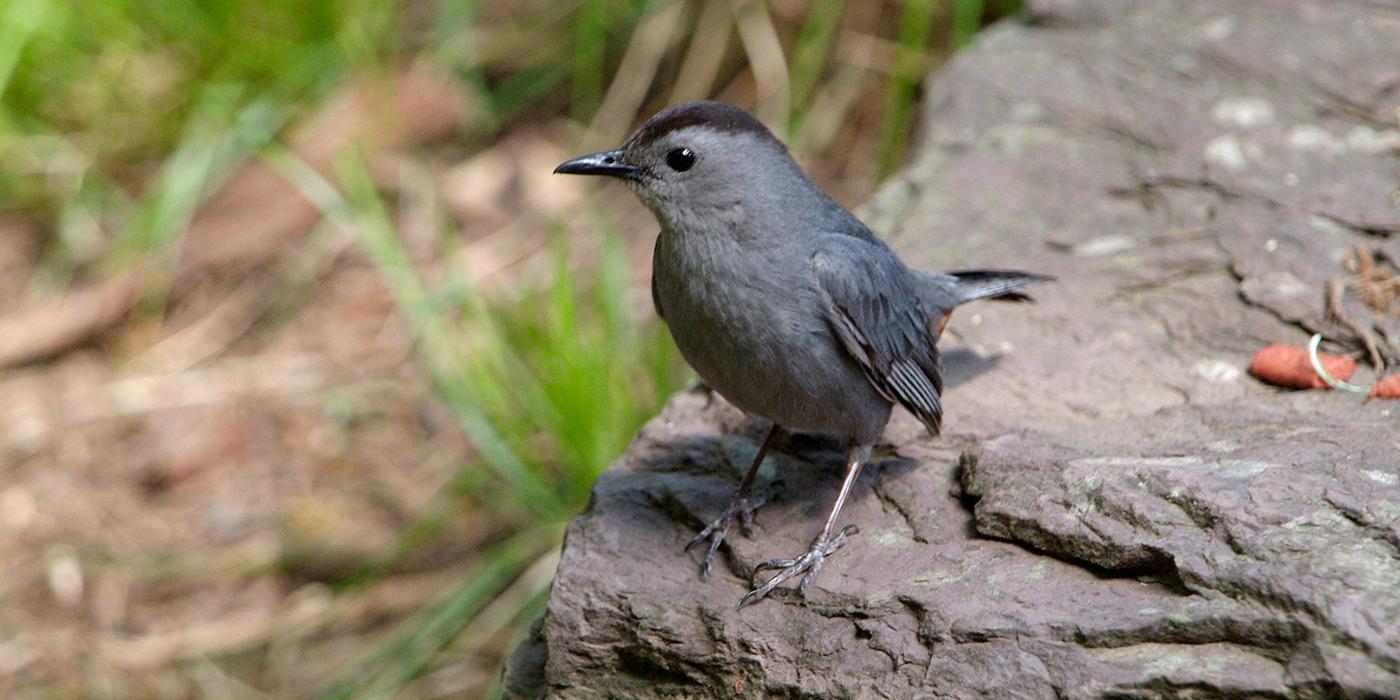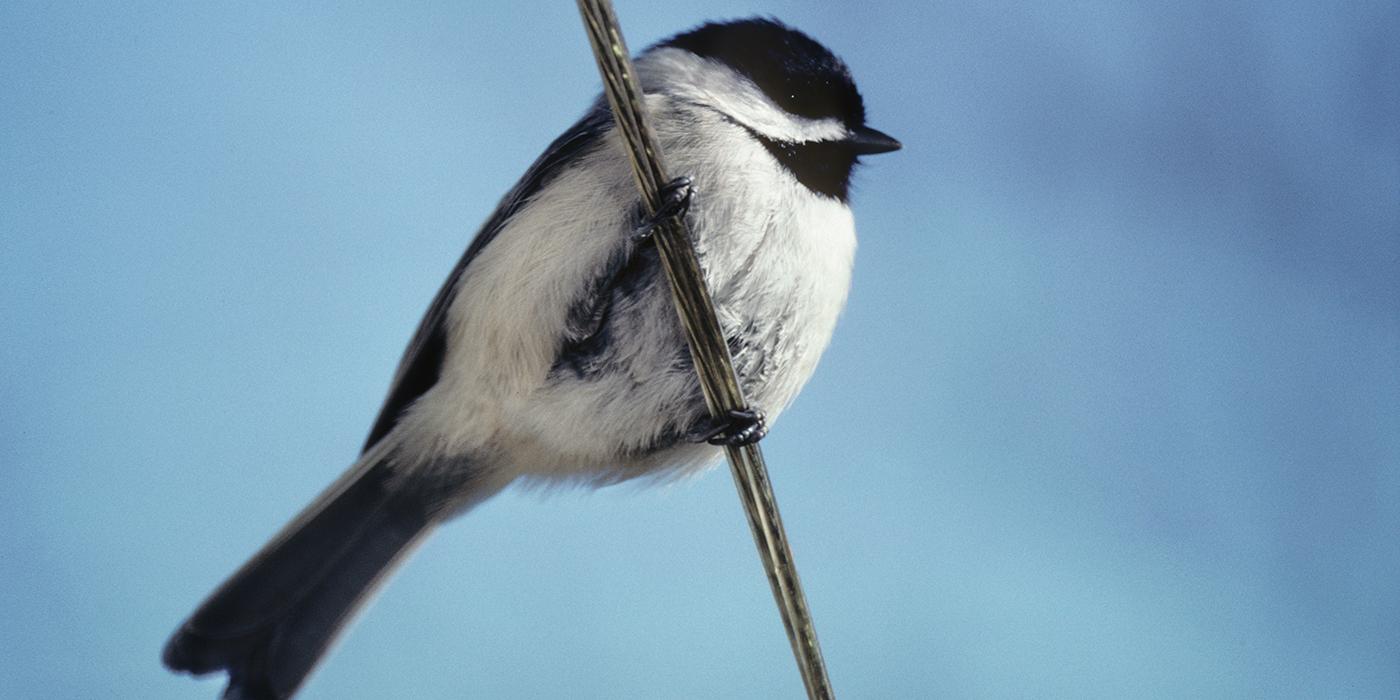Noble in Its Proper Place
Rock Pigeon
The rock pigeon is the official English name for our common city pigeon. It is as noble as any animal when you view it in its proper place. And, although they should be commended for making such a good living there, the proper place for a pigeon is not a city. Yes, pigeons are filthy. As an ornithologist, I must attest that they are unpleasant to handle. But it isn't their filth—it's ours, from our gutters and sooty roof tops.
What is a pigeon's natural environment? You might be surprised. Those greasy pigeons crowding urban parks are what we call feral pigeons because they are descended from escaped domestic pigeons owned by people who raised them for food or used their homing abilities to exchange messages.
But the ancestors of these feral/domestic pigeons lived in some of the world's wildest places—mountains and sea cliffs of Europe and Asia. Places, for example, like the Himalayas. Can you imagine? Tall snowy mountains and craggy valleys filled with animals like snow leopards, yaks, blue sheep, and…pigeons. I bet Tibetans don't call them rats with wings.
What could a city have in common with the Himalayas? How could these disparate environments have anything in common? Their main similarity is that both have cliffs. Pigeons in natural places (the true wild pigeons) love cliffs and their ledges. And so, to a pigeon, buildings in cities are merely synthetic cliffs. They are a fine substitute, providing endless places to nest and seek shelter.
Ledges seem to be a key habitat requirement and nest sites are defended against other pigeons through elaborate displays on the ground and in the air. Nesting in cities seems to occur throughout the year, although wild pigeons, like most birds, nest during just one part of the year when food is most abundant.
Let's continue to examine these big, boxy cliffs. What else could make a living here? Sticking with birds, there is one that, like a pigeon, builds its nests on cliff ledges. In fact, it shares space with pigeons in the Himalayas. This bird is a picky eater and its food of choice is other birds. It is a raptor called the peregrine falcon. The fastest bird on earth, it uses gravity to achieve great speeds to strike prey in the air.
In recent years, the peregrine has appeared in cities with increasing frequency as its endangered populations have rebounded in response to efforts by wildlife managers to restore the species after DDT, a pesticide which caused eggshell thinning, decimated their populations. One of the big reasons the falcon is successful in cities is that there are plenty of pigeons to eat.
But what about food for pigeons? I'm certain that there is very little popcorn in the Himalayas, and no french fries or pizza crusts either. So clearly, a big part of the pigeon's success is that they are not picky eaters. One study investigated the feeding habits of both wild and feral pigeons.
For the wild pigeons, it was mostly seed and grain for meals. Feral pigeons had a similar menu, but added starchy people food and assorted table scraps. It's been suggested that pigeons were initially domesticated about 5,000 years ago after agriculture became established and pigeons were attracted to the easy meals near granaries, which kept them near people and their buildings.
The relationship between pizza crust, pigeons, and peregrines suggests that even cities function like ecosystems, where plants and animals interact with each other and with their environment. These urban ecosystems are much less complex than natural ecosystems, since only a fraction of plants and animals possess the flexibility to enter a completely artificial environment and succeed. Nonetheless, as more and more of our planet changes from natural habitat to human habitat, it is important to understand these ecosystems and why certain species are successful.


